Imaging Projects
In this blog, I will share the results of all of my imaging projects. The newest will be at the top and the oldest will be further down the stack. Going back in time here is interesting - some of my early stuff was pretty rough - but I did not see it that way at the time - I was thrilled to get anything back that looked like an image! Hopefully, you will see how my work has progressed with time!
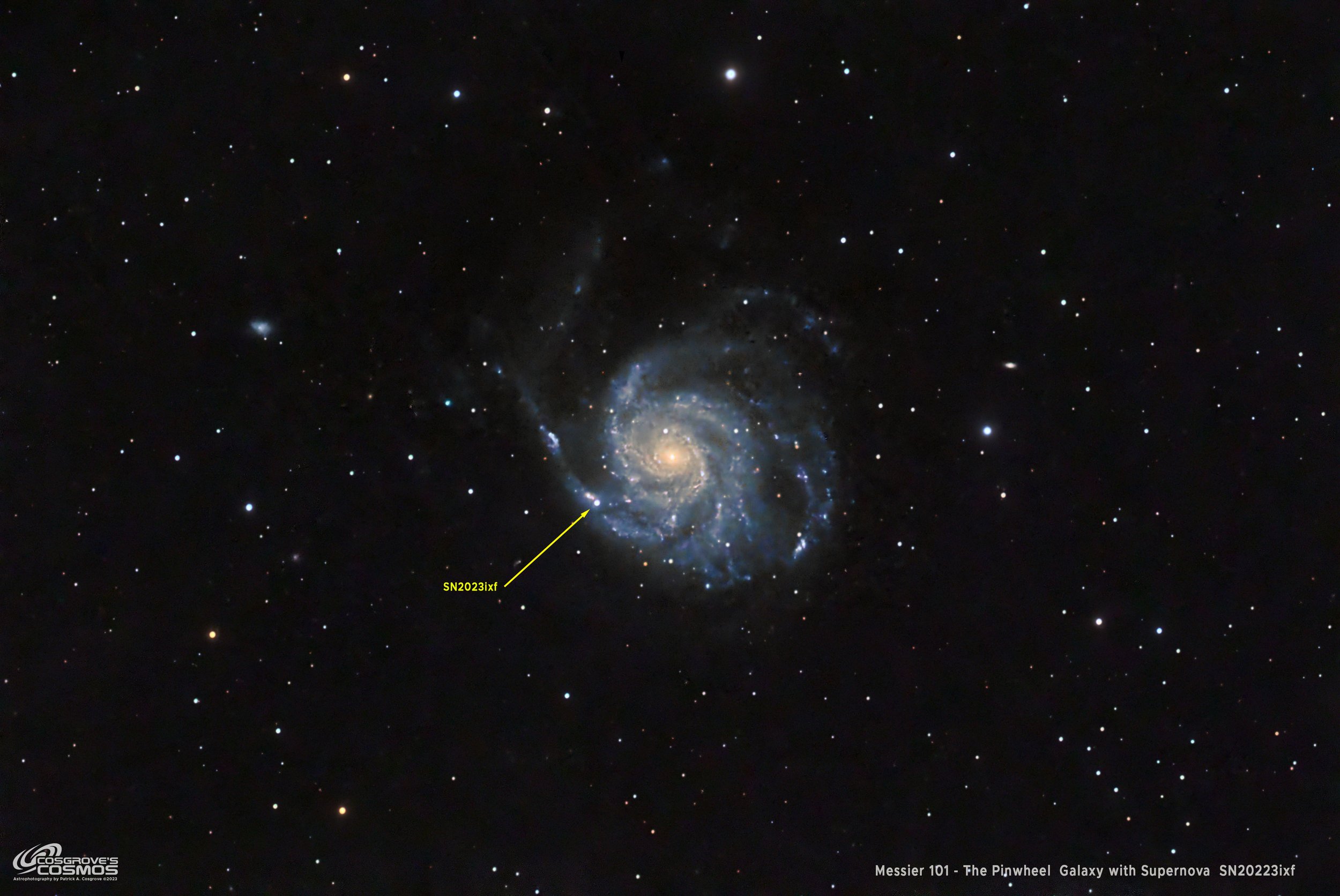
Messier 101 Supernova SN2023ixf ~3 Hrs in LRGB - Yet Another Supernova Shot - But This One Is Mine!
With the recent discovery of a bright supernova in the well-known Messier 101 - The Pinwheel Galaxy - a lot of astrophotographers have been going out of their way to grab an image of this galaxy during this event.
As a result, there are many - probably TOO many - images of this going around.
So why take an image myself? Is it because I think I can do better? NOPE! After all, I shot this on a widefield scope not suitable for galaxies, and I ended up shooting through smoke and with too little integration. So why do it?
Well - I wanted my own image of this event- and I wanted an excuse to explore what supernovae really are - after all - here I am looking at one!
So this posting will delve into this topic….

Messier 102 - The Spindle Galaxy - 2.0 Hrs in LRGB - Still Shooting Through the Smoke…
Messier 102, also known as NGC 5866 and the Spindle Galaxy, is located 50 Million light-years away in the constellation of Draco. Its diameter is 60,000 light-years, making it 2/3rds the size of our Milkyway even though it has about the same mass.
NGC 5866 is one of the two galaxies known as the Spindle Galaxy. The other, NGC 3115, is an edge-on lenticular galaxy located in the constellation Serpens.
This was another image from the lul in the smoke plumes from Alberta. Because of this, this image was starved for integration time and shot through some smoke still in the sky - so this image is not as good as I would like it to be. But - if you zoom in, you can see a lot of detail in the galaxy's dust lane!
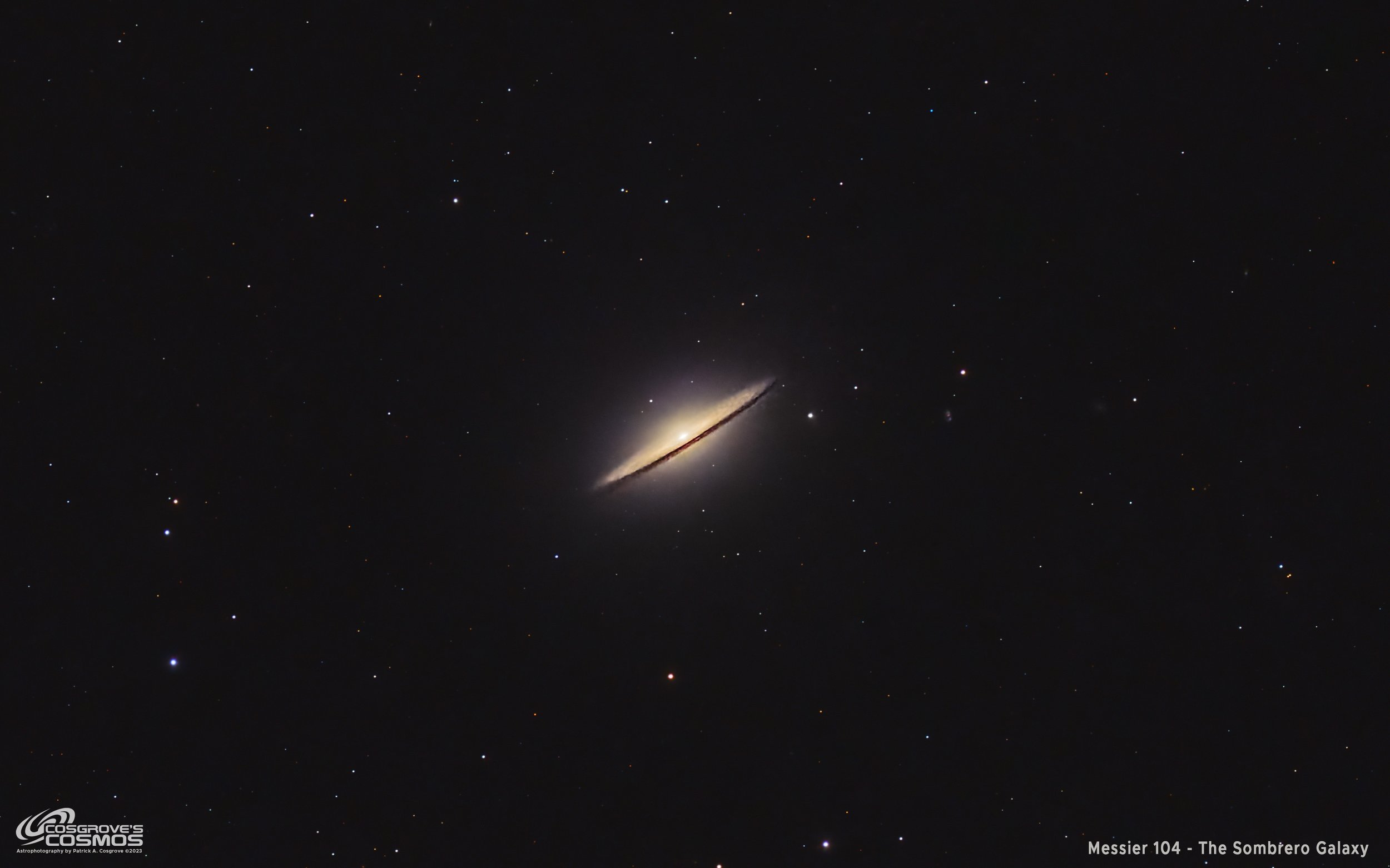
Messier 104 - The Sombrero Galaxy - 1.7 Hrs in LRGB - Too Little Time, Too Low in the Sky, Too Much Smoke…
Messier 104, also known as the Sombrero Galaxy, is a stunning sight in the night sky. Located in the constellation Virgo, this galaxy stands out due to its unique shape. With a bright central bulge surrounded by a flat disk of stars, it resembles a sombrero hat. It is estimated to be approximately 28 million light-years away from Earth and spans about 94,000 light-years across.
I have always wanted to shoot this target, but this project produced a result far below what I was shooting for as conditions were poor (smoke plumes), and integration ended up being a ridiculous 1.7 hours!
Surprisingly the resulting image is not that bad. It's not good, either.
It did better than expected because of its capable Camera. But at least I have a baseline for when I shoot this target again n the future!
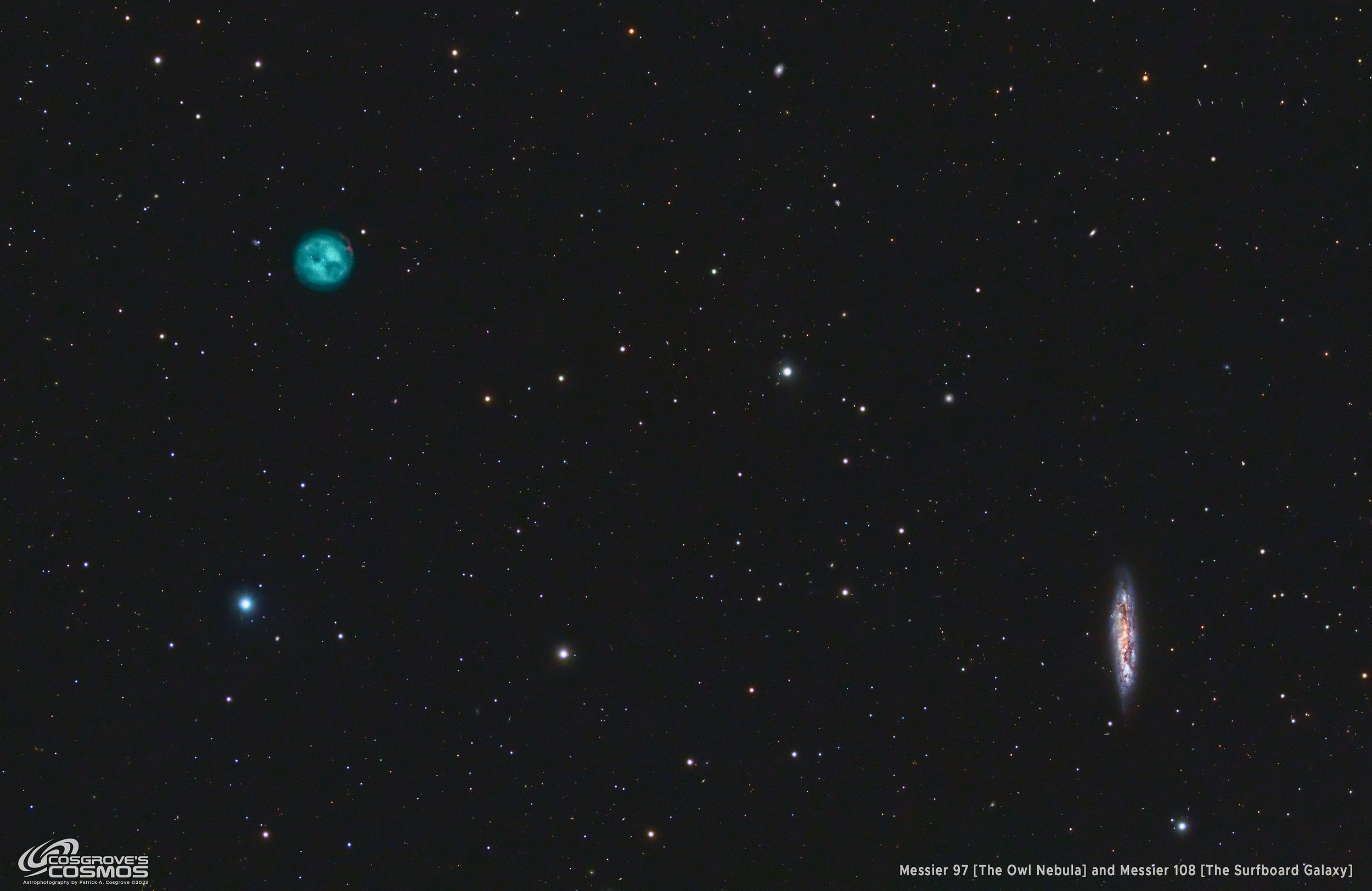
Messier 97 - The Owl Nebula and Messier 108 - The Surfboard Galaxy - 4 hours LRGB
This imaging project captures two messier objects in the same field of view!
Messier 97 is a planetary nebula better known as the Owl Nebula.
Messier 108 is better known as the Surfboard Galaxy.
This image resulted from just under 4 hours of LRGB exposure. It was shot on my William Optics 132mm Plaform after being upgraded with a flattened/0.8X Reducer and a new ZWO ASI12600MM-Pro camera.
This image was the first project I have been able to do in 2023 and was taken on two nights when the Jet Stream pushed the Smoke Plume from the Alberta Wildfires to the south of us. But this image still suffered from smoke effects!
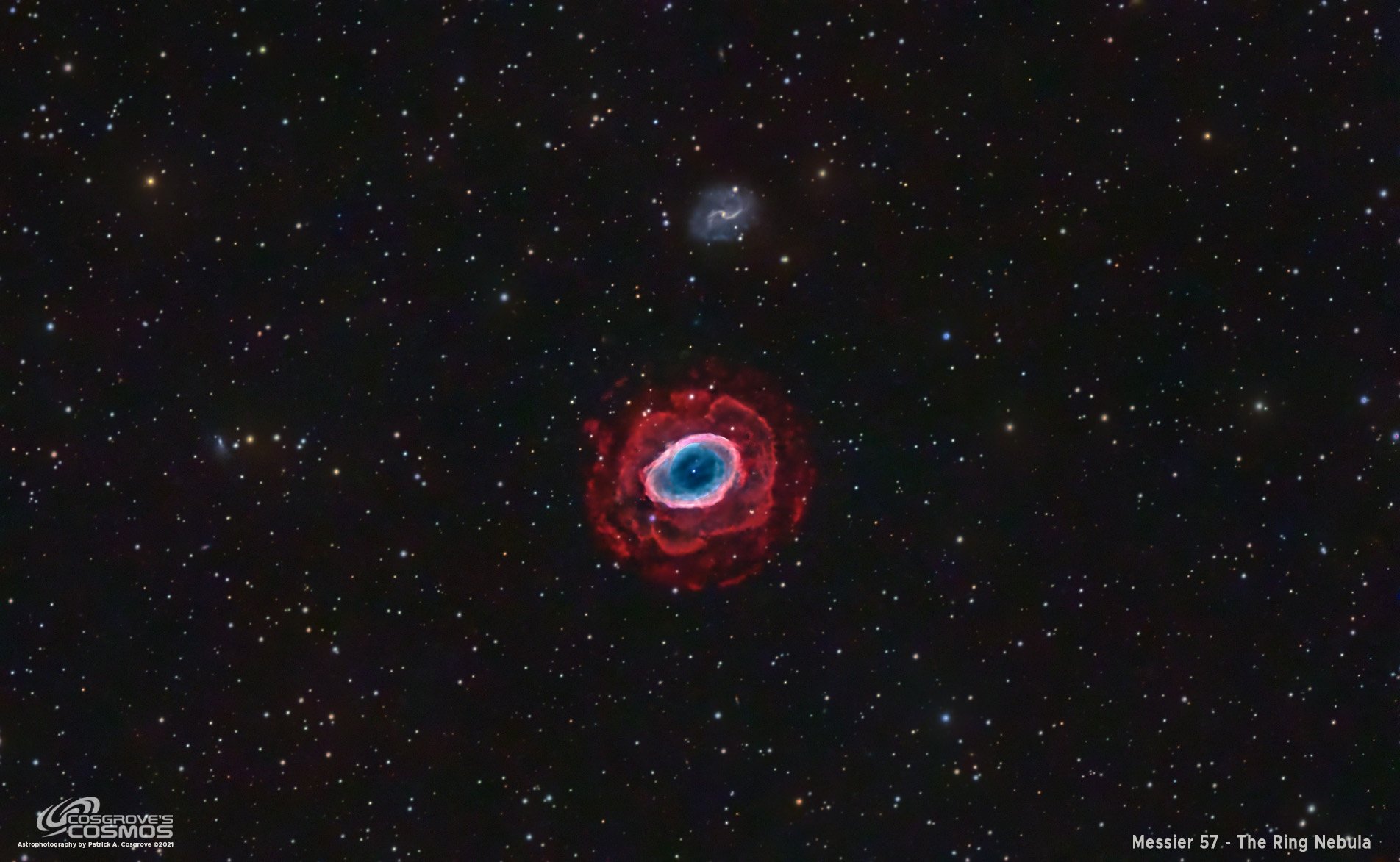
Messier 57 - A Reprocess of The Ring Nebula - 14.7 hours in LHaRGB!
Messier 57, the Ring Nebula has long been a visual favorite of mine. This was a reprocess of data that was collected in 2022. Based on 14.7 hours of HaLRGB, this data showed the rarely seen outer shell. I wanted to see if I could improve on that image with advanced tools and techniques. Since the original image was published, I created a new imaging project for posting to contain both the old and the new versions in the collection.

Messier 27 - A Reprocess of My Dumbbell Nebula Data in SHO - (10.25 Hours)
This imaging project is not a recapture of data for M27 - the Dumbell Nebula. Rather it is an effort to reprocess old data using new tools and new processing methods to address some concerns I had about the original image - where I thought that the stars were bloated and unsharp, and that I thought I should be able to bring out more detail in the amazing outer gas shells that narrowband imaging shows for this target.
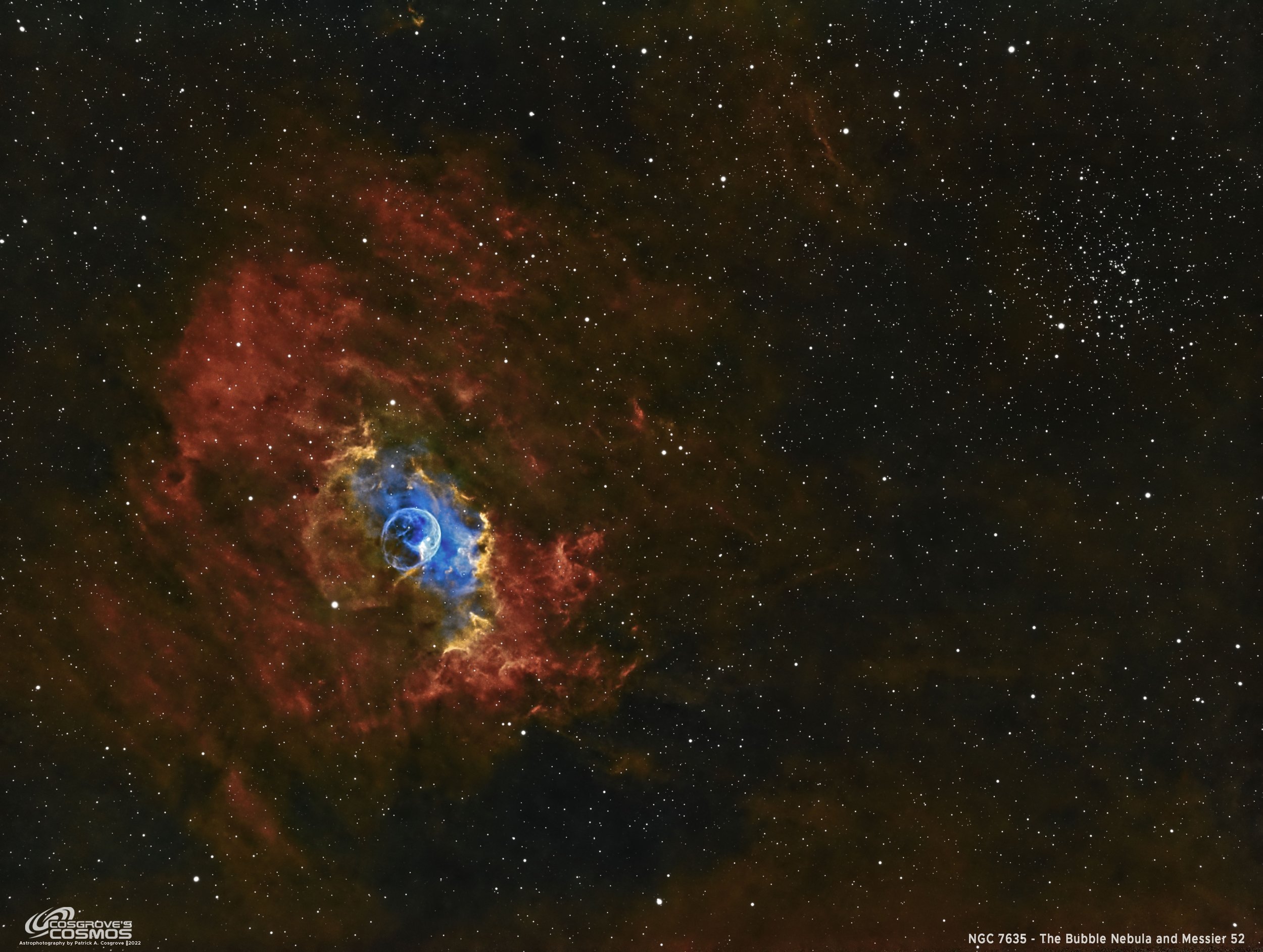
NGC 7635 - The Bubble Nebula w/M52 - 8.25 hours in SHO - Not Sure I Love it.
NGC 7635 - The Bubble Nebula with M52. 8.25 hours in SHO.
This image was shot on my William Optics 132mm FLT APO platform, using a ASI1600MM-Pro Camera and the IOptron CEM60 mount.
The original goal was to do a deeper integration of at least 15 hours - and while the weather would have supported this, I missed two clear nights due to illness.
This image has a very high color and contrast position - almost too high for me, but I disliked the lower contrast and saturation versions more - so this is it. I am not sure I love this image….
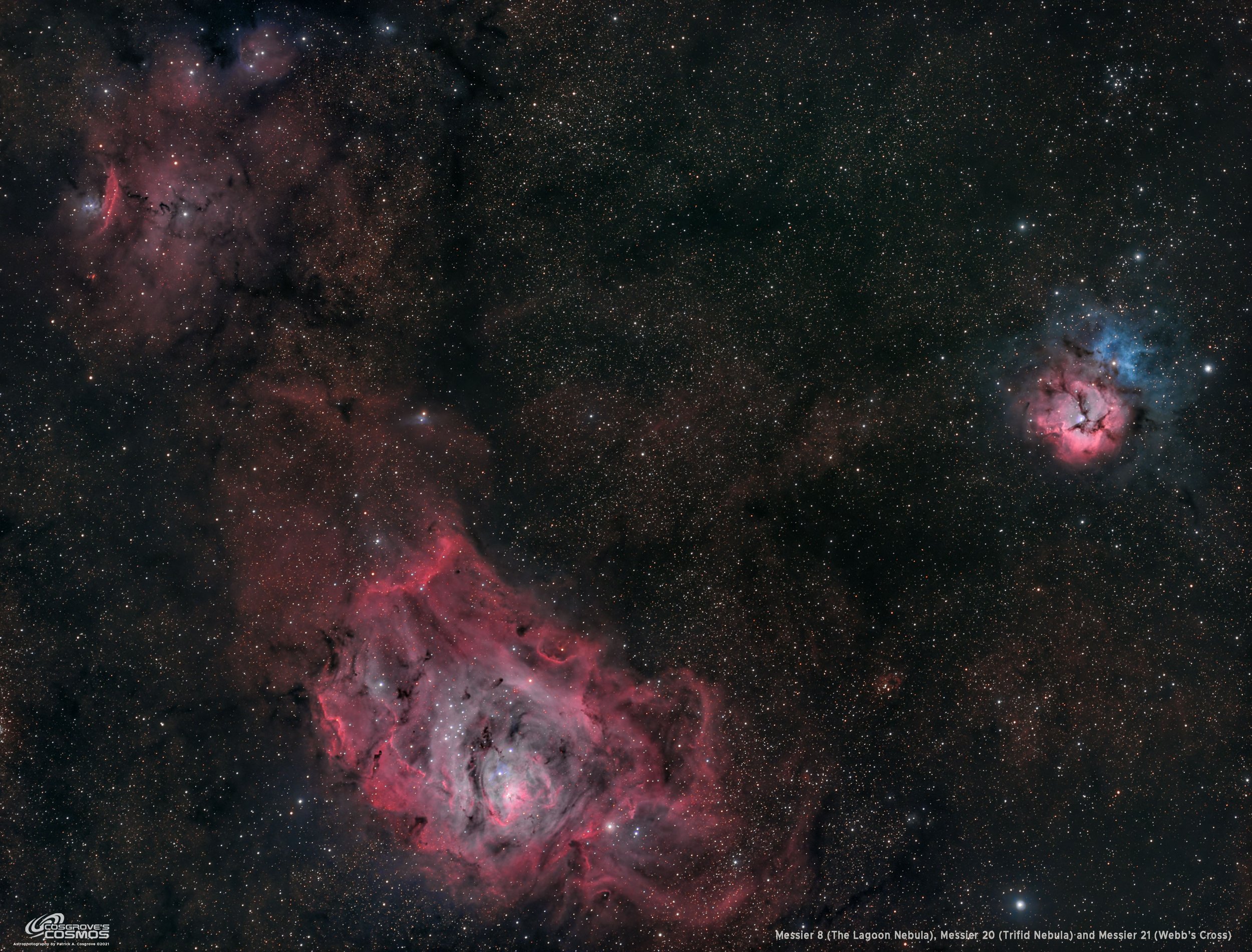
Messier 8, 20, and 21: A Rich Region in Sagittarius - 3.9 hours in HaRGB
This imaging project is a group photo taken in a rich portion of the constellation Sagittarius. It is the result of just 4 hours of LHaRGB integration. In this group, you can see Messier 8 (The Lagoon Nebula), Messier 20 (The Trifid Nebula), and Messier 21 ( Webb’s Cross). Also seen is the “Fist” shaped nebula on the upper left that is most strongly associated with IC 4685. This was taken with my Askar FRA400 widefield scope platform.
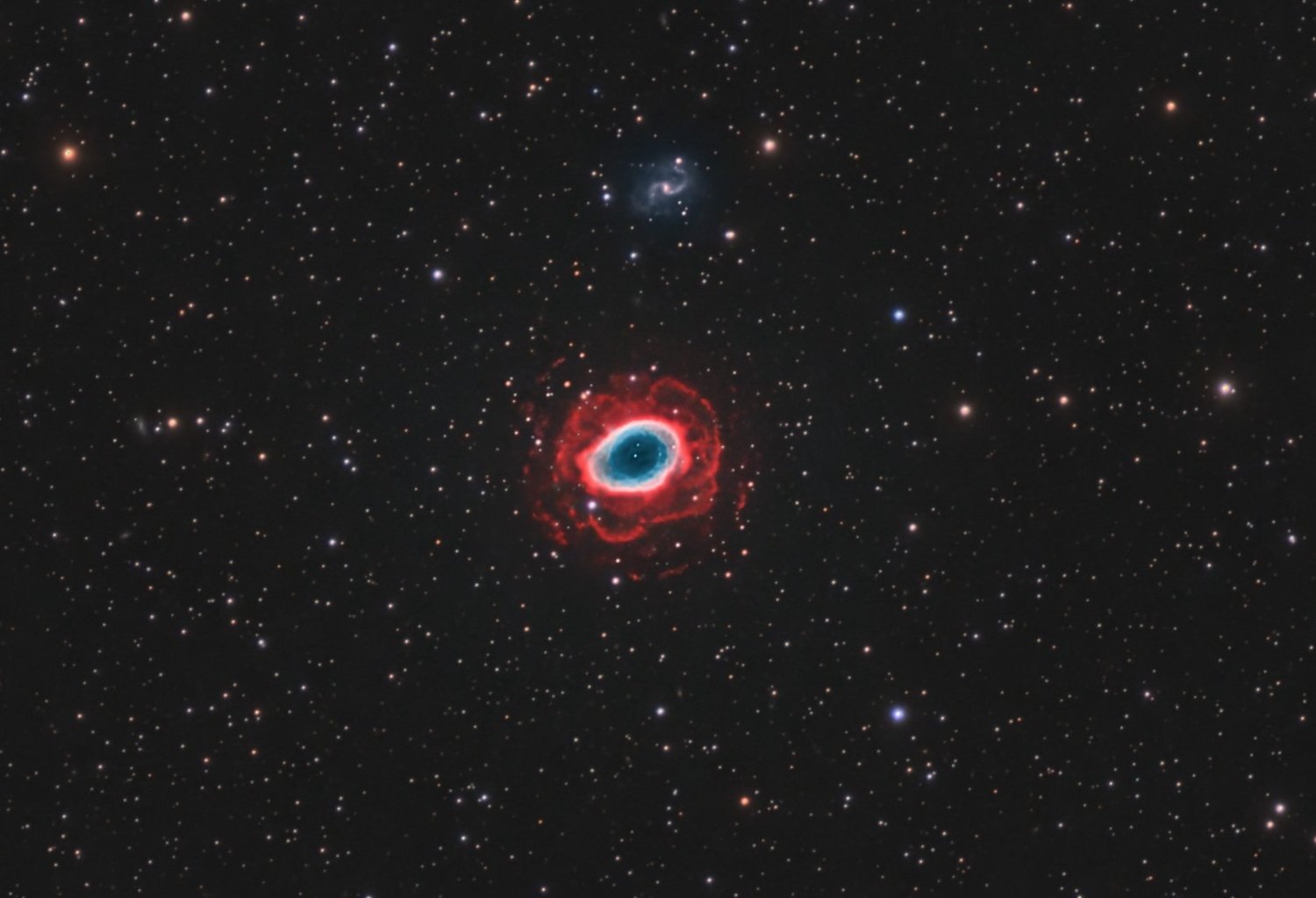
Messier 57 - The Ring Nebula - 14.7 hours in LHaRGB - Capturing the Outer Ring!
Messier 57, the Ring Nebula has long been a visual favorite of mine. It is also a target that I have shot two times before with poor results due to its small size. This time I wanted to try to do the best job I could, given the limitations of my current gear. I also wanted to get a really long integration. Finally, I wanted to add Ha data in an attempt to capture the red outer gas rings that are not seen visually and often not seen in the typical amateur images. While I ran into problems on the way, did pretty well in meeting my goals. See the full post for the entire story!
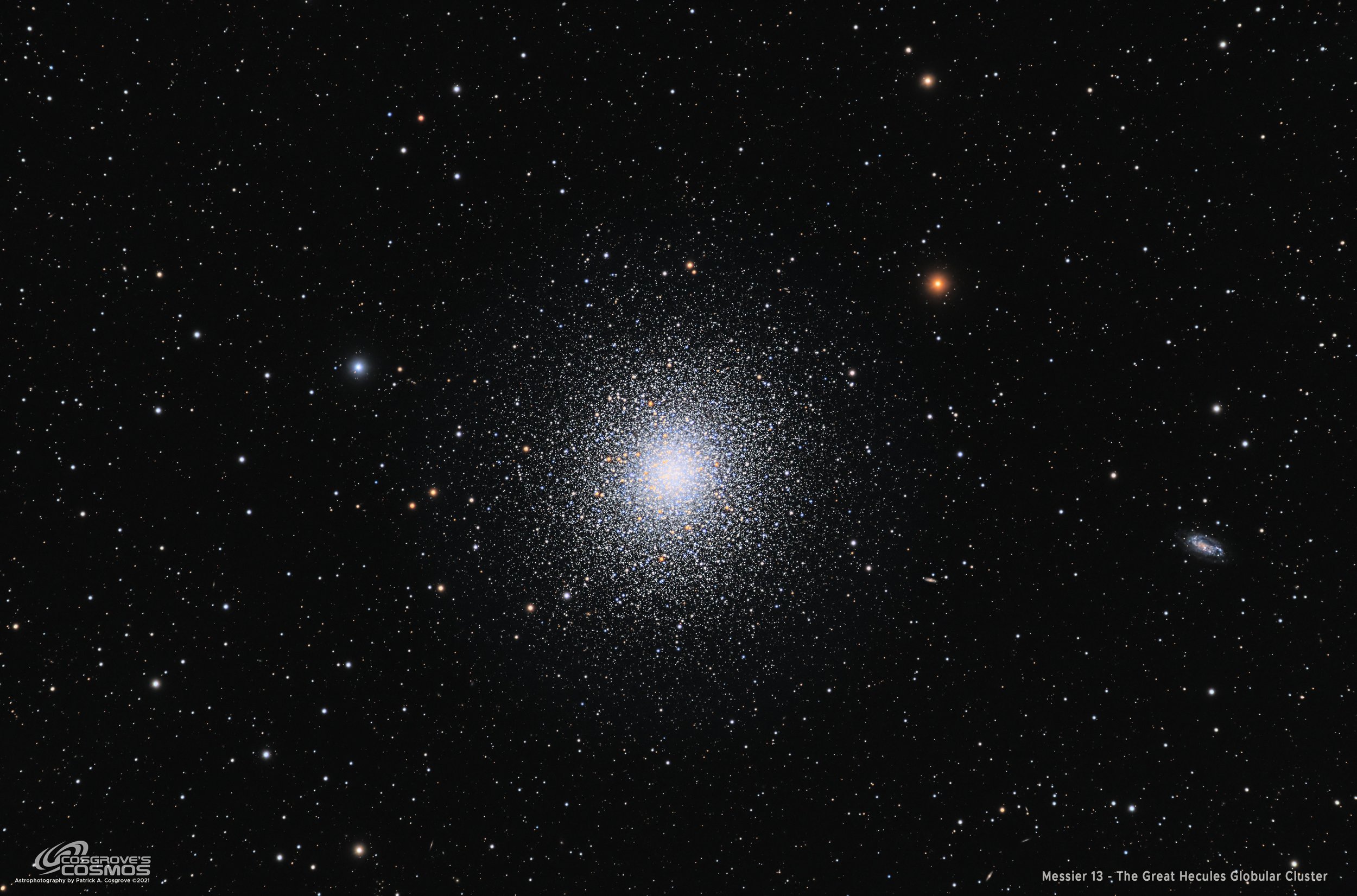
Messier 13 - The Great Hercule Cluster - 8.5 hours in LRGB - Super Sharp!
Messier 13 - the Great Hercules Cluster - is one of the finest examples of a Globular Cluster that can be found in our skies. It consists of a giant ball of 100,000-500,00 stars packed into an area 145 light-years across. M13 can be found between 22,000 and 25,000 light-years away in the constellation of Hercules.
This is a 5.6 8.5 hour integration in LRGB using my Astro-Physics 130mm scope the ZWO ASI2600MM-Pro camera. This is the fourth time I have shot this target and this one is clearly my best - displaying a remarkable sharpness in detail.
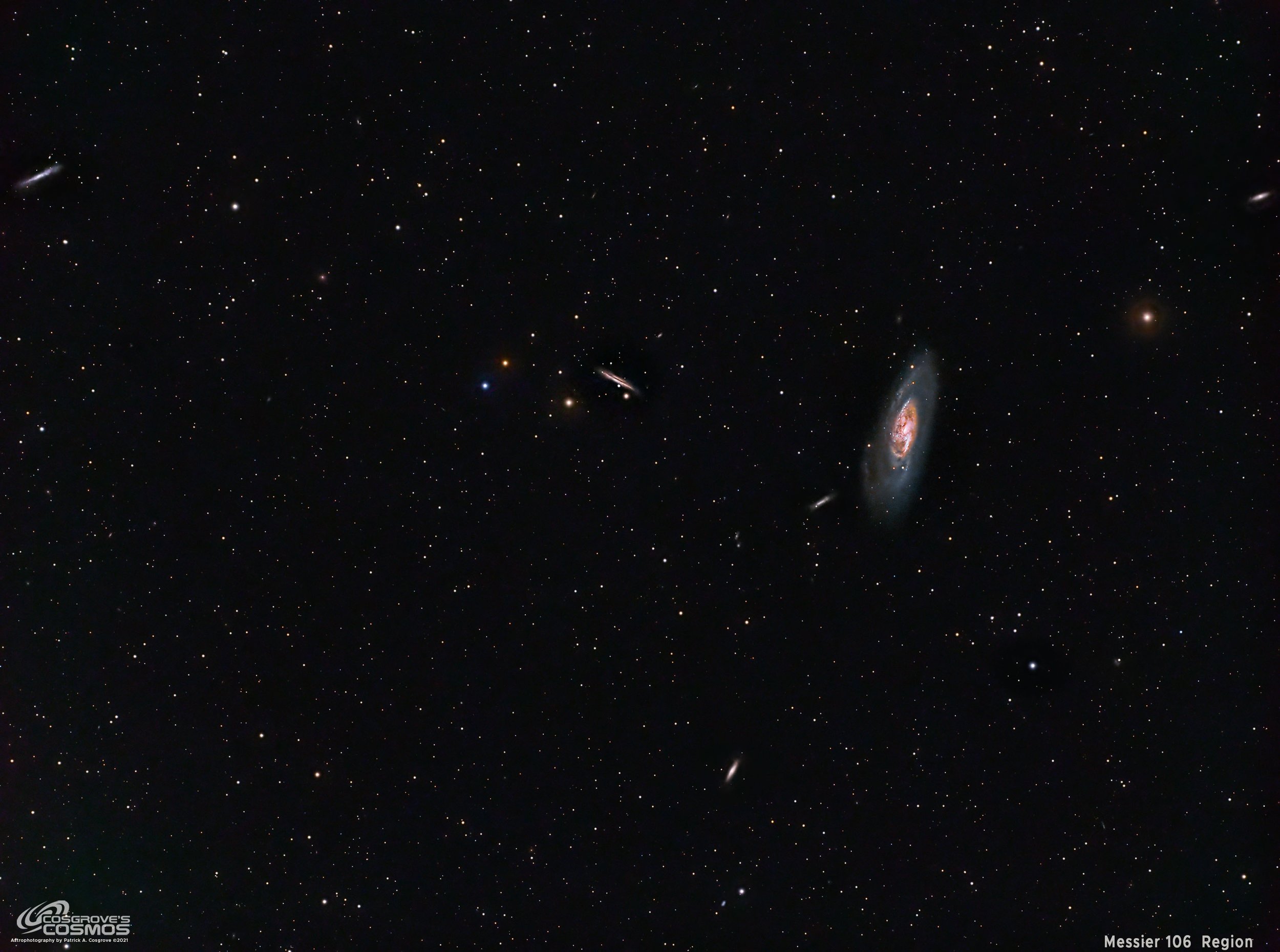
Messier 106 Region - 5.7 hours LRGB
Messier 106 is a galaxy in Canes Venatici, located 20-25 million light-years away.
Galaxy Season is challenging time to find targets when you are dealing with a widefield telescope. I finally decided to image the region around M106 as it contains a host smaller galaxies.
This is a 5.6 hour integration in LRGB using my Askar FRA400 Astrograph and the ZWO ASI1600MM-Pro camera.
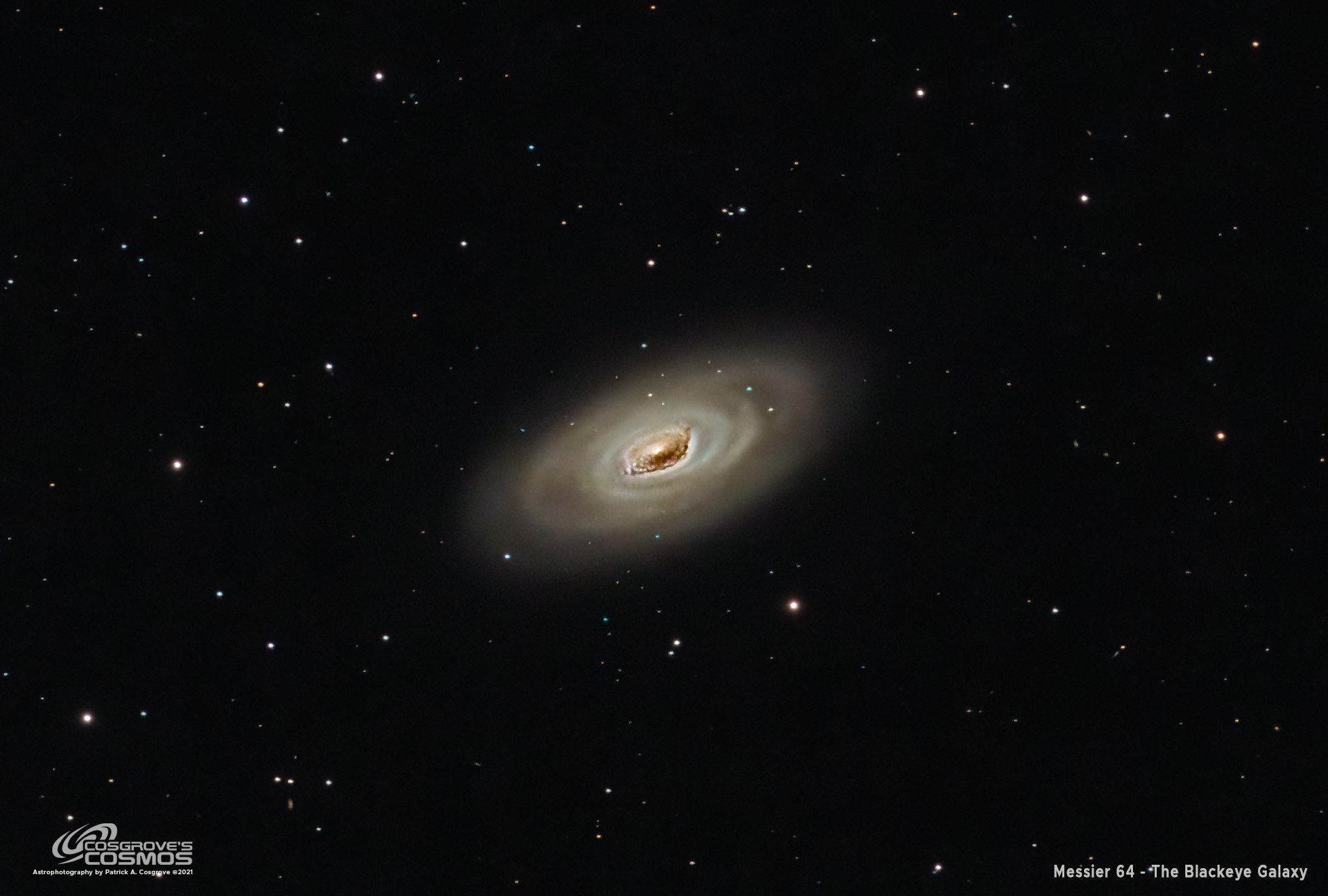
Messier 64 - The Black Eye Galaxy - 2.6 hrs in LRGB
Messier 64 - The Black Eye Galaxy is the result of 2.6 hours of LRGB data taken with my William Optics 132 mm platform and the ASI1600MM-Pro mono camera. This famous galaxy is located 17 million light-years away in the constellation of Coma Berenices. This is my second attempt with this target - the first being taken two years ago. I am pretty happy with the new results!
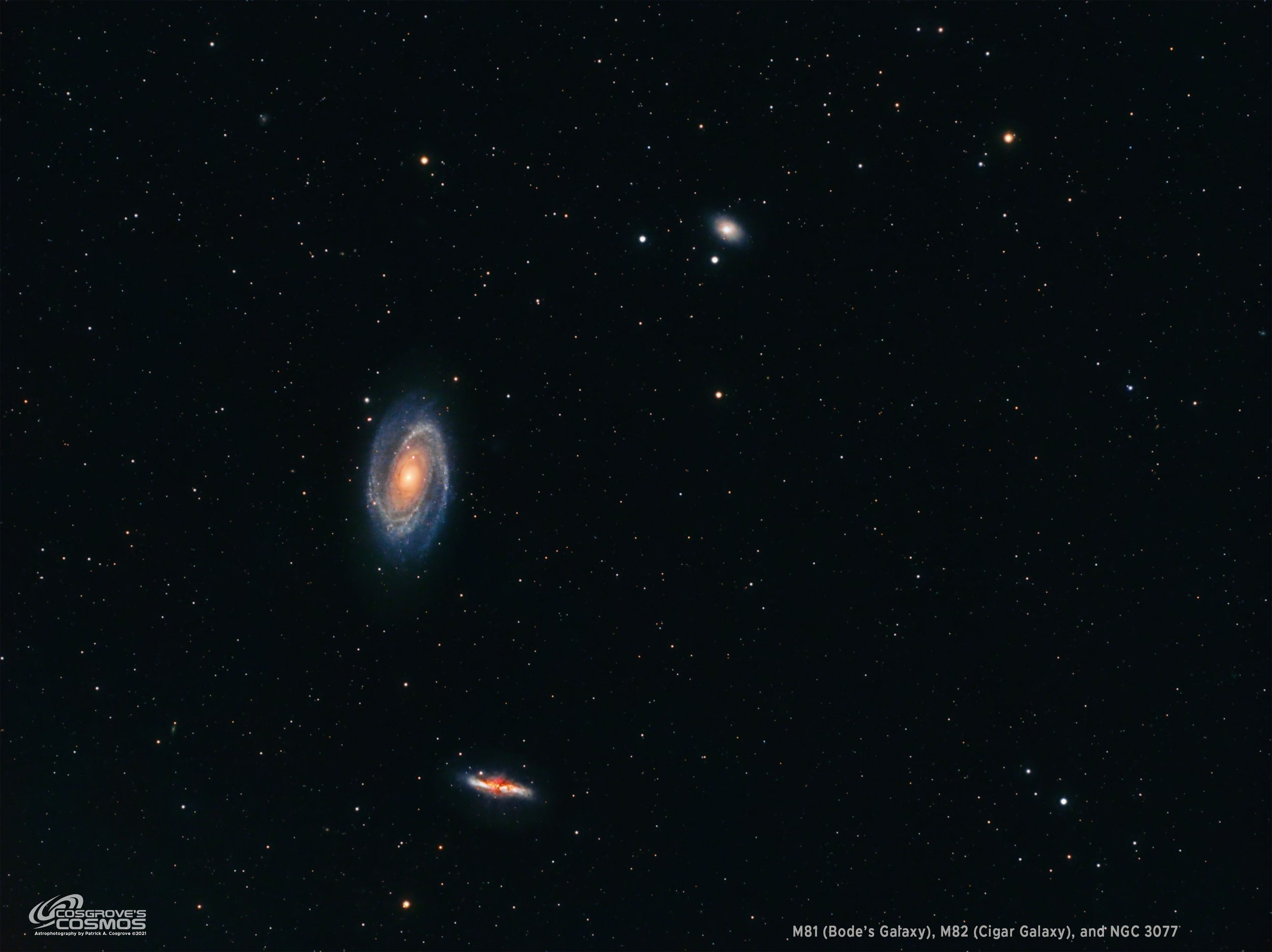
Messier 81/82 Wide Field: 3.5 hours LRGB - A Failed Quest for IFN!
I decided to try using my widefield Askar FRA400 platform to image the region around M81 & M82 to try and capture IFN (integrated Flux Nebula). This effort failed miserably! The resulting image was not too bad, but I was not able to get the kind of integration needed to capture this elusive feature! While this was a major disappointment, the resulting image shows M81, M82, and a third small galaxy NGC 3077 in a very nice part of the sky.
